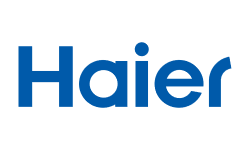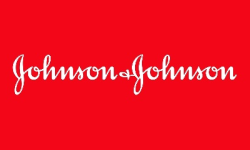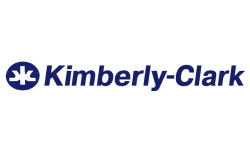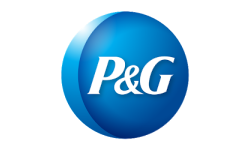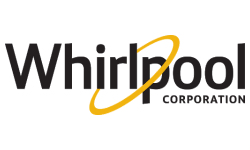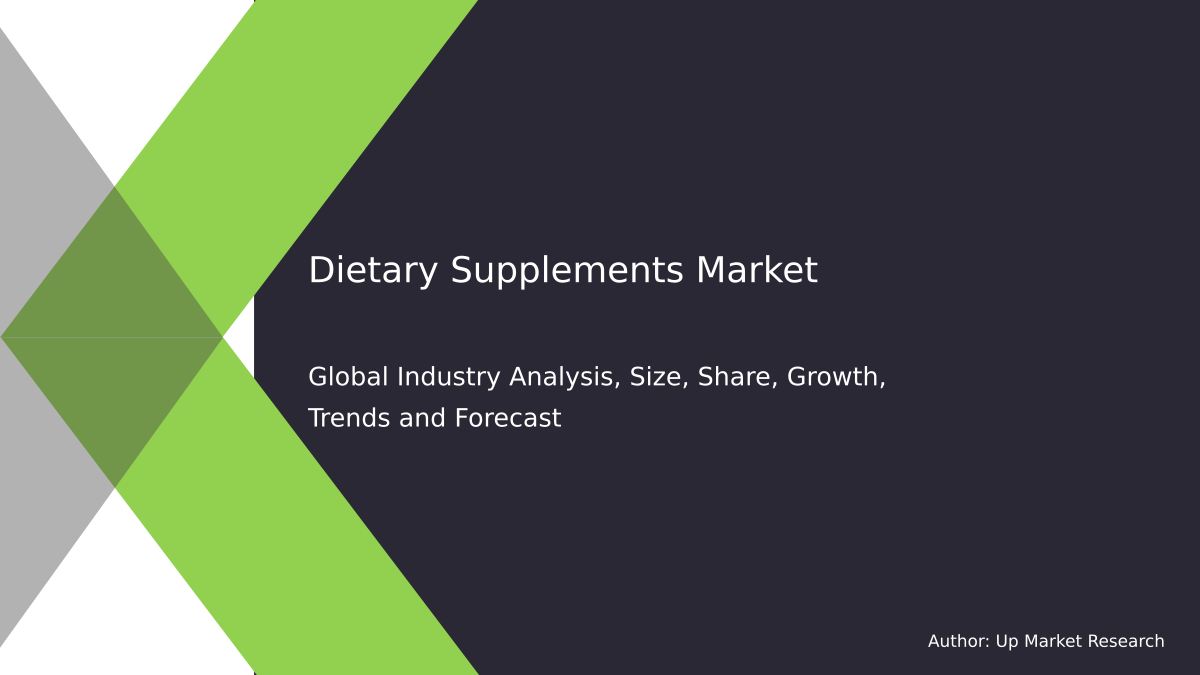
Global Fish Protein Hydrolysate Market by Source (Anchovies, Sardines), by Technology (Acid Hydrolysis, Autolytic), by Form (Liquid, Powder) and Region (North America, Latin America, Europe, Asia Pacific and Middle East & Africa), Forecast To 2028
Summary of the Report
Global fish protein hydrolysate market was worth USD 243.7 million in 2019. It is projected to grow at a 5.1% compound annual growth rate (CAGR), between 2020 and 2027. The market is expected to grow due to rising product demand from the pharmaceutical industry. They are fast-absorbing and can promote lean muscle mass. The ingredients made from whole fish are called fish protein. Fish Protein Hydrolysate, also known as Fish Protein Hydrolysate, is used in many industries, including animal feed, petfood cosmetics and food & drinks. Over the next few years, the market will be driven by the increasing consumption of fish protein in various food and beverage applications such as infant formulas, sports nutrition, protein supplements, and other food & beverages.
Due to rising awareness regarding weight management, muscle building, disease prevention and physical, mental, and physical health, the U.S. market is expected to experience high growth. The market will be driven by the increasing food & beverage industry, growing middle-class population, and high-income levels.
The product has been shown to be beneficial in the treatment of gastrointestinal problems associated with Irritable Bowel Syndrome and Crohn's disease. Fish proteins are used in infant formula to make hypoallergenic protein food alternatives for babies with celiac disease, milk allergy, or gluten intolerance.
Anchovies and herrings are the most popular types of fish. These fish are rich in a variety components including peptides that have antioxidative, antimicrobial and antihyperglycemic properties. Research has shown that fish side streams contain valuable bioactive ingredients such as fish oils & fat acids, enzymes and glucosaminoglycans. Over the next few decades, animal feed applications will see a significant increase in FPH demand.
The aquaculture feed industry has seen a rise in its utilization of the product, which is one of the key factors driving the segment's growth. This is due to the fact that fish farming currently accounts for more than half of the world's fish feed supply. It is expected to increase further over the next few years. This will make fish protein hydrolysate an important segment of the aquaculture industry in providing high-quality amino acids and overall nutritional value.
The market's growth will be limited by a shortage of raw materials such as Tuna from the Pacific Ocean or Japan Sea or Atlantic Salmon from Scandinavian countries like Denmark, Norway and Sweden. Aquatic products, which can be stored, processed and sold quickly, are also extremely perishable. Unforeseen obstructions in transport routes can prevent smooth movement of fresh food supply chains. This can lead to food loss and hindering market demand.
Technology Insights
Acid hydrolysis technology dominated the market and was responsible for 46.0% of global revenue in 2019. This technology is much more common than autolytic or enzymatic hydrolysis. To achieve a certain level of hydrolysis (DH), the acid hydrolysis must be performed at high temperature and pressure (220-310 mPa and 121-138 degrees C, respectively) for several hours. The pH of the mixture is then neutralized to pH 6.0-7.0. It is then dried.
The segment is expected to grow because of growing demand for the product in various food and beverage applications such as nutritional supplements and functional food. The segment's growth will be further boosted by the increasing use of seafood protease, trypsin and pyloricceca, both from Atlantic salmon and other distinguished fishes as a nutritional additive and cryoprotectant for aquafeed and liquid fertilisers in the coming years.
Acid hydrolysis has its drawbacks. It can result in the destruction of tryptophan, an essential amino acid, and/or high levels of sodium chloride (NaCl), in the final product. This makes it ineligible for biochemical and food applications.
Enzymatic hydrolysis is performed in a mildly to slightly elevated temperature solution, usually 35-65 degrees C, with various enzymes such as pepsins and papain. Because of its ability to preserve essential fish nutrients and maintain neutral taste, as well as to reduce the reaction time, FPH demand is expected to continue to grow over the next few decades.
Source Insights
The market's largest segment, the anchovy source segment, accounted for over 32.0% of the global volume in 2019. The rising demand for high-quality fertilizers and the changing perception of chemical-induced fertilizers by consumers in this field will lead to steady growth in demand for anchovy protein hydrolysate.
Anchovy-based protein Hydrolysate is also being used in the production of high-performance, economical fertilizers. This is due to its ability to improve soil quality. This will in turn propel the overall market demand. The product demand will be boosted by strict regulations regarding the use of chemically enhanced fertilizers. Companies such as Dramm Corporation or U.S. Ag Florida, Inc. are increasing their R&D efforts to produce high-quality organic fertilizer solutions.
The volume of sardine-based protein Hydrolysate will grow at a 5.1% annualized rate over the forecast period. Sardines are high in omega 3 and long-branched amino acid, which make them suitable for animal feed formulations. The product is well-suited for aquaculture feed applications. They are compatible with saltwater and/or seawater aquatic life.
The global market is expected to see a rise in demand for sardine protein hydrolysate due to the growing demand for natural and high-quality aquafeed products. These products not only improve flesh-to-bone consistency and decrease the incidence of viral infections such as dropsy and fin rot, but also increase the overall demand for sardine based protein hydrolysate. The use of sardine-based protein hydralysate in agriculture is expected to increase the demand for the product. It is well known that it can promote crop growth and yield as well as decrease plant infection.
Application Insights
The market segment for pet food and animal feed was the largest, accounting for 46.0% of global revenue in 2019. It helps reduce the spread of infectious diseases and promotes animals' metabolic system against viruses, bacteria, and parasites. This, along with the product’s ability to improve livestock's health and metabolism, is a key factor in driving the segment's demand for FPH.
Broiler chickens are known to consume FPH regularly in order to aid muscle development. Broilers' gut morphology is enhanced by the use of enzymes found in fish proteins. They are able to digest fibrous foods such as grains and soybean meal thanks to the help of enzymes in fish proteins. Bioaccumulation will also drive product demand in the coming years. This is because natural growth promoters are more popular than antibiotic promoters for poultry animals.
FPH is a safe ingredient that can be used in pharmaceutical products. It has many health benefits including blood pressure regulation and anti-aging skin properties. It is suitable for cosmetic use and as a nutritional & pharmaceutical supplement due to its fast-absorbing properties.
In response to these factors, many industry manufacturers incorporate FPH into their pharmaceutical preparations in order to offer consumers natural, low-side-effect products. FPH is used to make supplements for the elderly because it does not cause blood levels of insulin or cholesterol to rise and can be easily digested. This will in turn increase product demand during the forecast period.
Form Insights
The market was led by powder-based products, accounting for over 57.0% of global volume in 2019. In the coming years, the market growth will be accelerated by the growing demand for powdered FPH to manufacture pharmaceutical-grade products such as protein powders and other supplements that aid in blood and muscle recovery following accidents.
Powder-based FPH will also be in demand due to rising use of natural ingredients in cosmetics and agriculture. Powdered products also have a longer shelf life, are easier to transport and store, and can be spoilage-resistant. The liquid FPH segment is expected to record the highest CAGR of 5.5% in terms of revenue over the forecast period.
Liquid products have approximately 90% moisture, high water solubility, and favorable amino acid profiles. This makes them ideal for pharmaceutical and nutraceutical manufacturing. Liquid FPH is satiating, which helps maintain cholesterol levels and reduces the risk of benign and malignant tumors in people. This will also increase demand for these products.
Regional Insights
North America was the dominant market, accounting for more than 40% of global revenue in 2019. The forecast period will see the growth of the cosmetics industry due to promising trends and rising consumption of anti-aging and collagen-enriched products. FPH is used in the manufacture of anti-aging creams and serums as well as face masks due to its high protein content and amino acid contents.
The region's growing awareness of skincare is expected to increase FPH demand for cosmetics and healthcare over the next few years. The market will be driven further by the presence of established cosmetics product manufacturers in the region such as Elemis Ltd. and Dr. Dennis Gross Skincare LLC. These companies focus on increasing their product range and consumer reach through the launch of protein- and/or marine collagen-rich cosmetics solutions.
Asia Pacific will see the highest CAGR in the coming years. Fish protein is used mainly in the regional food industry as a nutritional and dietary supplement. The regional market has yet to reach its full potential in beverages. The industry has been able to develop new products that target mental well-being as well as overall health.
FPH is helping to define the market context for a rapidly changing market in major countries like China, India and Japan, despite the uncertainty surrounding existing regulations. A rising self-care movement and changes in food regulations will also contribute to the industry's growth. There is also ongoing scientific evidence that demonstrates the crucial link between diet and health.
Market Share Insights & Key Companies
The industry players market is focused on sourcing high-quality raw materials and developing new hydrolyzed proteins extraction processes. They also focus on innovating native technology to expand their customer base and increase brand recognition. Industry players are increasingly turning to pure FPH solutions due to rising demand for natural ingredients. This will likely drive market growth. Bio-marine ingredients Ireland Ltd. and the Irish Research Council's Enterprise Partnership carried out a 12-week feeding study in March 2020 to examine the effects of low-fishmeal diets/high levels of plant-protein on gut health and growth performance for Atlantic salmon raised in freshwater. The company is awaiting the results of the recent study and hopes to open up new markets for sustainable aquaculture feed. The market for fish protein hydrolysate includes the following players:
-
Sopropeche
-
Diana Group
-
Copalis Sea Solutions
-
Scanbio
-
Bio-marine Ingredients Ireland Ltd.
-
United Fisheries
-
Shenzhen Taier
-
New Alliance Dye Chem Pvt. Ltd.
-
Neptune's Harvest
-
Alaska Protein Recovery, LLC
-
Great Pacific BioProducts Ltd.
-
BrownsFish Genesis
-
Dramm Corp.
-
U.S. Ag Florida, Inc.
-
Sampi
-
Marutham Bio Ages Innovations Ltd.
-
Hofseth BioCare
-
Janatha Fish Meal & Oil Products
Up Market Research published a new report titled “Fish Protein Hydrolysate Market research report which is segmented by Source (Anchovies, Sardines), by Technology (Acid Hydrolysis, Autolytic), by Form (Liquid, Powder), By Players/Companies Bio-marine Ingredients Ireland Ltd, Diana Group, Copalis Sea Solutions, BrownsFish Genesis, Janatha Fish Meal & Oil Products, Alaska Protein Recovery LLC, Hofseth BioCare, United Fisheries, Shenzhen Taier, Scanbio, Sampi, Sopropeche, US Ag Florida Inc, Neptune's Harvest, New Alliance Dye Chem Pvt Ltd, Dramm Corp, Marutham Bio Ages Innovations (p) Ltd, Great Pacific BioProducts Ltd”. As per the study the market is expected to grow at a CAGR of XX% in the forecast period.
Report Scope
| Report Attributes | Report Details |
| Report Title | Fish Protein Hydrolysate Market Research Report |
| By Source | Anchovies, Sardines |
| By Technology | Acid Hydrolysis, Autolytic |
| By Form | Liquid, Powder |
| By Companies | Bio-marine Ingredients Ireland Ltd, Diana Group, Copalis Sea Solutions, BrownsFish Genesis, Janatha Fish Meal & Oil Products, Alaska Protein Recovery LLC, Hofseth BioCare, United Fisheries, Shenzhen Taier, Scanbio, Sampi, Sopropeche, US Ag Florida Inc, Neptune's Harvest, New Alliance Dye Chem Pvt Ltd, Dramm Corp, Marutham Bio Ages Innovations (p) Ltd, Great Pacific BioProducts Ltd |
| Regions Covered | North America, Europe, APAC, Latin America, MEA |
| Base Year | 2020 |
| Historical Year | 2018 to 2019 (Data from 2010 can be provided as per availability) |
| Forecast Year | 2028 |
| Number of Pages | 226 |
| Number of Tables & Figures | 159 |
| Customization Available | Yes, the report can be customized as per your need. |
The report covers comprehensive data on emerging trends, market drivers, growth opportunities, and restraints that can change the market dynamics of the industry. It provides an in-depth analysis of the market segments which include products, applications, and competitor analysis.

Global Fish Protein Hydrolysate Market Report Segments:
The market is segmented by Source (Anchovies, Sardines), by Technology (Acid Hydrolysis, Autolytic), by Form (Liquid, Powder).
Fish Protein Hydrolysate Market research report delivers a close watch on leading competitors with strategic analysis, micro and macro market trend and scenarios, pricing analysis and a holistic overview of the market situations in the forecast period. It is a professional and a detailed report focusing on primary and secondary drivers, market share, leading segments and geographical analysis. Further, key players, major collaborations, merger & acquisitions along with trending innovation and business policies are reviewed in the report.
Key Benefits for Industry Participants & Stakeholders:
- Industry drivers, restraints, and opportunities covered in the study
- Neutral perspective on the market performance
- Recent industry trends and developments
- Competitive landscape & strategies of key players
- Potential & niche segments and regions exhibiting promising growth covered
- Historical, current, and projected market size, in terms of value
- In-depth analysis of the Fish Protein Hydrolysate Market
Overview of the regional outlook of the Fish Protein Hydrolysate Market:
Based on region, the market is segmented into North America, Europe, Asia Pacific, Latin America and Middle East & Africa (MEA). North America region is further bifurcated into countries such as U.S., and Canada. The Europe region is further categorized into U.K., France, Germany, Italy, Spain, Russia, and Rest of Europe. Asia Pacific is further segmented into China, Japan, South Korea, India, Australia, South East Asia, and Rest of Asia Pacific. Latin America region is further segmented into Brazil, Mexico, and Rest of Latin America, and the MEA region is further divided into GCC, Turkey, South Africa, and Rest of MEA.

Highlights of The Fish Protein Hydrolysate Market Report:
- The market structure and projections for the coming years.
- Drivers, restraints, opportunities, and current trends of Fish Protein Hydrolysate Market.
- Historical data and forecast.
- Estimations for the forecast period 2028.
- Developments and trends in the market.
1. Anchovies
2. Sardines
7. By Technology:1. Acid Hydrolysis
2. Autolytic
8. By Form:1. Liquid
2. Powder
- Market scenario by region, sub-region, and country.
- Market share of the market players, company profiles, product specifications, SWOT analysis, and competitive landscape.
- Analysis regarding upstream raw materials, downstream demand, and current market dynamics.
- Government Policies, Macro & Micro economic factors are also included in the report.
We have studied the Fish Protein Hydrolysate Market in 360 degrees via. both primary & secondary research methodologies. This helped us in building an understanding of the current market dynamics, supply-demand gap, pricing trends, product preferences, consumer patterns & so on. The findings were further validated through primary research with industry experts & opinion leaders across countries. The data is further compiled & validated through various market estimation & data validation methodologies. Further, we also have our in-house data forecasting model to predict market growth up to 2028.
How you may use our products:
- Correctly Positioning New Products
- Market Entry Strategies
- Business Expansion Strategies
- Consumer Insights
- Understanding Competition Scenario
- Product & Brand Management
- Channel & Customer Management
- Identifying Appropriate Advertising Appeals

Reasons to Purchase the Fish Protein Hydrolysate Market Report:
- The report includes a plethora of information such as market dynamics scenario and opportunities during the forecast period
- Segments and sub-segments include quantitative, qualitative, value (USD Million,) and volume (Units Million) data.
- Regional, sub-regional, and country level data includes the demand and supply forces along with their influence on the market.
- The competitive landscape comprises share of key players, new developments, and strategies in the last three years.
- Comprehensive companies offering products, relevant financial information, recent developments, SWOT analysis, and strategies by these players.
Chapter 2 Assumptions and Acronyms Used
Chapter 3 Research Methodology
Chapter 4 Fish Protein Hydrolysate Market Overview
4.1 Introduction
4.1.1 Market Taxonomy
4.1.2 Market Definition
4.1.3 Macro-Economic Factors Impacting the Market Growth
4.2 Fish Protein Hydrolysate Market Dynamics
4.2.1 Market Drivers
4.2.2 Market Restraints
4.2.3 Market Opportunity
4.3 Fish Protein Hydrolysate Market - Supply Chain Analysis
4.3.1 List of Key Suppliers
4.3.2 List of Key Distributors
4.3.3 List of Key Consumers
4.4 Key Forces Shaping the Fish Protein Hydrolysate Market
4.4.1 Bargaining Power of Suppliers
4.4.2 Bargaining Power of Buyers
4.4.3 Threat of Substitution
4.4.4 Threat of New Entrants
4.4.5 Competitive Rivalry
4.5 Global Fish Protein Hydrolysate Market Size & Forecast, 2018-2028
4.5.1 Fish Protein Hydrolysate Market Size and Y-o-Y Growth
4.5.2 Fish Protein Hydrolysate Market Absolute $ Opportunity
Chapter 5 Global Fish Protein Hydrolysate Market Analysis and Forecast by Source
5.1 Introduction
5.1.1 Key Market Trends & Growth Opportunities by Source
5.1.2 Basis Point Share (BPS) Analysis by Source
5.1.3 Absolute $ Opportunity Assessment by Source
5.2 Fish Protein Hydrolysate Market Size Forecast by Source
5.2.1 Anchovies
5.2.2 Sardines
5.3 Market Attractiveness Analysis by Source
Chapter 6 Global Fish Protein Hydrolysate Market Analysis and Forecast by Technology
6.1 Introduction
6.1.1 Key Market Trends & Growth Opportunities by Technology
6.1.2 Basis Point Share (BPS) Analysis by Technology
6.1.3 Absolute $ Opportunity Assessment by Technology
6.2 Fish Protein Hydrolysate Market Size Forecast by Technology
6.2.1 Acid Hydrolysis
6.2.2 Autolytic
6.3 Market Attractiveness Analysis by Technology
Chapter 7 Global Fish Protein Hydrolysate Market Analysis and Forecast by Form
7.1 Introduction
7.1.1 Key Market Trends & Growth Opportunities by Form
7.1.2 Basis Point Share (BPS) Analysis by Form
7.1.3 Absolute $ Opportunity Assessment by Form
7.2 Fish Protein Hydrolysate Market Size Forecast by Form
7.2.1 Liquid
7.2.2 Powder
7.3 Market Attractiveness Analysis by Form
Chapter 8 Global Fish Protein Hydrolysate Market Analysis and Forecast by Region
8.1 Introduction
8.1.1 Key Market Trends & Growth Opportunities by Region
8.1.2 Basis Point Share (BPS) Analysis by Region
8.1.3 Absolute $ Opportunity Assessment by Region
8.2 Fish Protein Hydrolysate Market Size Forecast by Region
8.2.1 North America
8.2.2 Europe
8.2.3 Asia Pacific
8.2.4 Latin America
8.2.5 Middle East & Africa (MEA)
8.3 Market Attractiveness Analysis by Region
Chapter 9 Coronavirus Disease (COVID-19) Impact
9.1 Introduction
9.2 Current & Future Impact Analysis
9.3 Economic Impact Analysis
9.4 Government Policies
9.5 Investment Scenario
Chapter 10 North America Fish Protein Hydrolysate Analysis and Forecast
10.1 Introduction
10.2 North America Fish Protein Hydrolysate Market Size Forecast by Country
10.2.1 U.S.
10.2.2 Canada
10.3 Basis Point Share (BPS) Analysis by Country
10.4 Absolute $ Opportunity Assessment by Country
10.5 Market Attractiveness Analysis by Country
10.6 North America Fish Protein Hydrolysate Market Size Forecast by Source
10.6.1 Anchovies
10.6.2 Sardines
10.7 Basis Point Share (BPS) Analysis by Source
10.8 Absolute $ Opportunity Assessment by Source
10.9 Market Attractiveness Analysis by Source
10.10 North America Fish Protein Hydrolysate Market Size Forecast by Technology
10.10.1 Acid Hydrolysis
10.10.2 Autolytic
10.11 Basis Point Share (BPS) Analysis by Technology
10.12 Absolute $ Opportunity Assessment by Technology
10.13 Market Attractiveness Analysis by Technology
10.14 North America Fish Protein Hydrolysate Market Size Forecast by Form
10.14.1 Liquid
10.14.2 Powder
10.15 Basis Point Share (BPS) Analysis by Form
10.16 Absolute $ Opportunity Assessment by Form
10.17 Market Attractiveness Analysis by Form
Chapter 11 Europe Fish Protein Hydrolysate Analysis and Forecast
11.1 Introduction
11.2 Europe Fish Protein Hydrolysate Market Size Forecast by Country
11.2.1 Germany
11.2.2 France
11.2.3 Italy
11.2.4 U.K.
11.2.5 Spain
11.2.6 Russia
11.2.7 Rest of Europe
11.3 Basis Point Share (BPS) Analysis by Country
11.4 Absolute $ Opportunity Assessment by Country
11.5 Market Attractiveness Analysis by Country
11.6 Europe Fish Protein Hydrolysate Market Size Forecast by Source
11.6.1 Anchovies
11.6.2 Sardines
11.7 Basis Point Share (BPS) Analysis by Source
11.8 Absolute $ Opportunity Assessment by Source
11.9 Market Attractiveness Analysis by Source
11.10 Europe Fish Protein Hydrolysate Market Size Forecast by Technology
11.10.1 Acid Hydrolysis
11.10.2 Autolytic
11.11 Basis Point Share (BPS) Analysis by Technology
11.12 Absolute $ Opportunity Assessment by Technology
11.13 Market Attractiveness Analysis by Technology
11.14 Europe Fish Protein Hydrolysate Market Size Forecast by Form
11.14.1 Liquid
11.14.2 Powder
11.15 Basis Point Share (BPS) Analysis by Form
11.16 Absolute $ Opportunity Assessment by Form
11.17 Market Attractiveness Analysis by Form
Chapter 12 Asia Pacific Fish Protein Hydrolysate Analysis and Forecast
12.1 Introduction
12.2 Asia Pacific Fish Protein Hydrolysate Market Size Forecast by Country
12.2.1 China
12.2.2 Japan
12.2.3 South Korea
12.2.4 India
12.2.5 Australia
12.2.6 South East Asia (SEA)
12.2.7 Rest of Asia Pacific (APAC)
12.3 Basis Point Share (BPS) Analysis by Country
12.4 Absolute $ Opportunity Assessment by Country
12.5 Market Attractiveness Analysis by Country
12.6 Asia Pacific Fish Protein Hydrolysate Market Size Forecast by Source
12.6.1 Anchovies
12.6.2 Sardines
12.7 Basis Point Share (BPS) Analysis by Source
12.8 Absolute $ Opportunity Assessment by Source
12.9 Market Attractiveness Analysis by Source
12.10 Asia Pacific Fish Protein Hydrolysate Market Size Forecast by Technology
12.10.1 Acid Hydrolysis
12.10.2 Autolytic
12.11 Basis Point Share (BPS) Analysis by Technology
12.12 Absolute $ Opportunity Assessment by Technology
12.13 Market Attractiveness Analysis by Technology
12.14 Asia Pacific Fish Protein Hydrolysate Market Size Forecast by Form
12.14.1 Liquid
12.14.2 Powder
12.15 Basis Point Share (BPS) Analysis by Form
12.16 Absolute $ Opportunity Assessment by Form
12.17 Market Attractiveness Analysis by Form
Chapter 13 Latin America Fish Protein Hydrolysate Analysis and Forecast
13.1 Introduction
13.2 Latin America Fish Protein Hydrolysate Market Size Forecast by Country
13.2.1 Brazil
13.2.2 Mexico
13.2.3 Rest of Latin America (LATAM)
13.3 Basis Point Share (BPS) Analysis by Country
13.4 Absolute $ Opportunity Assessment by Country
13.5 Market Attractiveness Analysis by Country
13.6 Latin America Fish Protein Hydrolysate Market Size Forecast by Source
13.6.1 Anchovies
13.6.2 Sardines
13.7 Basis Point Share (BPS) Analysis by Source
13.8 Absolute $ Opportunity Assessment by Source
13.9 Market Attractiveness Analysis by Source
13.10 Latin America Fish Protein Hydrolysate Market Size Forecast by Technology
13.10.1 Acid Hydrolysis
13.10.2 Autolytic
13.11 Basis Point Share (BPS) Analysis by Technology
13.12 Absolute $ Opportunity Assessment by Technology
13.13 Market Attractiveness Analysis by Technology
13.14 Latin America Fish Protein Hydrolysate Market Size Forecast by Form
13.14.1 Liquid
13.14.2 Powder
13.15 Basis Point Share (BPS) Analysis by Form
13.16 Absolute $ Opportunity Assessment by Form
13.17 Market Attractiveness Analysis by Form
Chapter 14 Middle East & Africa (MEA) Fish Protein Hydrolysate Analysis and Forecast
14.1 Introduction
14.2 Middle East & Africa (MEA) Fish Protein Hydrolysate Market Size Forecast by Country
14.2.1 Saudi Arabia
14.2.2 South Africa
14.2.3 UAE
14.2.4 Rest of Middle East & Africa (MEA)
14.3 Basis Point Share (BPS) Analysis by Country
14.4 Absolute $ Opportunity Assessment by Country
14.5 Market Attractiveness Analysis by Country
14.6 Middle East & Africa (MEA) Fish Protein Hydrolysate Market Size Forecast by Source
14.6.1 Anchovies
14.6.2 Sardines
14.7 Basis Point Share (BPS) Analysis by Source
14.8 Absolute $ Opportunity Assessment by Source
14.9 Market Attractiveness Analysis by Source
14.10 Middle East & Africa (MEA) Fish Protein Hydrolysate Market Size Forecast by Technology
14.10.1 Acid Hydrolysis
14.10.2 Autolytic
14.11 Basis Point Share (BPS) Analysis by Technology
14.12 Absolute $ Opportunity Assessment by Technology
14.13 Market Attractiveness Analysis by Technology
14.14 Middle East & Africa (MEA) Fish Protein Hydrolysate Market Size Forecast by Form
14.14.1 Liquid
14.14.2 Powder
14.15 Basis Point Share (BPS) Analysis by Form
14.16 Absolute $ Opportunity Assessment by Form
14.17 Market Attractiveness Analysis by Form
Chapter 15 Competition Landscape
15.1 Fish Protein Hydrolysate Market: Competitive Dashboard
15.2 Global Fish Protein Hydrolysate Market: Market Share Analysis, 2019
15.3 Company Profiles (Details – Overview, Financials, Developments, Strategy)
15.3.1 Bio-marine Ingredients Ireland Ltd
15.3.2 Diana Group
15.3.3 Copalis Sea Solutions
15.3.4 BrownsFish Genesis
15.3.5 Janatha Fish Meal & Oil Products
15.3.6 Alaska Protein Recovery LLC
15.3.7 Hofseth BioCare
15.3.8 United Fisheries
15.3.9 Shenzhen Taier
15.3.10 Scanbio
15.3.11 Sampi
15.3.12 Sopropeche
15.3.13 US Ag Florida Inc
15.3.14 Neptune's Harvest
15.3.15 New Alliance Dye Chem Pvt Ltd
15.3.16 Dramm Corp
15.3.17 Marutham Bio Ages Innovations (p) Ltd
15.3.18 Great Pacific BioProducts Ltd
The global Fish Protein Hydrolysate market has been segmented based on
By Source
- Anchovies
- Sardines
- Acid Hydrolysis
- Autolytic
- Liquid
- Powder
- Asia Pacific
- North America
- Latin America
- Europe
- Middle East & Africa
- Bio-marine Ingredients Ireland Ltd
- Diana Group
- Copalis Sea Solutions
- BrownsFish Genesis
- Janatha Fish Meal & Oil Products
- Alaska Protein Recovery LLC
- Hofseth BioCare
- United Fisheries
- Shenzhen Taier
- Scanbio
- Sampi
- Sopropeche
- US Ag Florida Inc
- Neptune's Harvest
- New Alliance Dye Chem Pvt Ltd
- Dramm Corp
- Marutham Bio Ages Innovations (p) Ltd
- Great Pacific BioProducts Ltd
Related Reports
Some other reports from this category!


